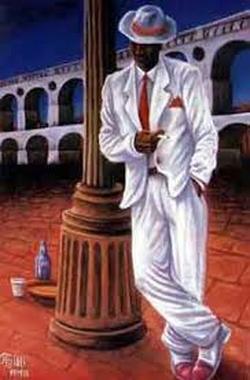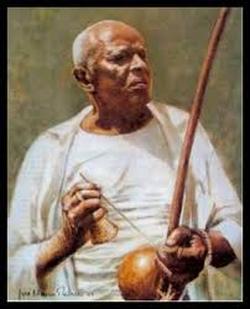Capoeira: Resistance Embodied

Born to the rhythm of drums, Capoeira is an art of wits, will and resourcefulness—a testament to the resilience of the human spirit. The story our elders, the mestres, pass down to us is that Capoeira was created by enslaved Africans laboring on Brazilian sugar plantations. Torn from their homeland, divested of language, community, and customs, they owned only what could be hidden in their flesh. Their “Africanness”—indeed, their very humanity—survived in muscle memory, in the rhythms, rituals and movement that had been central to their cultures of origin.
Music and dance were thus a profound act of resistance. Capoeira, which veils lethal attacks and escapes in flurries of dance-like movement and percussive riffs, is the prevailing symbol of this embodied resistance. The mestres claim that the fighting techniques developed under the shroud of dance were used by the slaves in outright battle against their Portuguese oppressors. Capoeira was first recorded, however, on the docks and in the dark alleys of Rio de Janeiro, practiced by malandros, or “low life” ex-slaves and hoodlums. Prohibited by law and persecuted by the police, capoeiristas, or Capoeira practitioners, passed messages in music and shared space and influence with other marginalized Afro-Brazilian popular expressions--samba and candomblé.
Music and dance were thus a profound act of resistance. Capoeira, which veils lethal attacks and escapes in flurries of dance-like movement and percussive riffs, is the prevailing symbol of this embodied resistance. The mestres claim that the fighting techniques developed under the shroud of dance were used by the slaves in outright battle against their Portuguese oppressors. Capoeira was first recorded, however, on the docks and in the dark alleys of Rio de Janeiro, practiced by malandros, or “low life” ex-slaves and hoodlums. Prohibited by law and persecuted by the police, capoeiristas, or Capoeira practitioners, passed messages in music and shared space and influence with other marginalized Afro-Brazilian popular expressions--samba and candomblé.

In 1930, the visionary Mestre Bimba began to develop a methodology for teaching Capoeira and succeeded in elevating it from a marginalized street art to a Brazilian national treasure. It is now practiced throughout the world, and is among the most important purveyors of Brazilian culture and language. Its stubborn adherence to improvisation and individual expression, its deep connection with music, and the circularity of the roda, the ring of bodies in which it is played, penetrates our flesh, making those of us who are open vehicles for the Afro-Brazilian spirit.